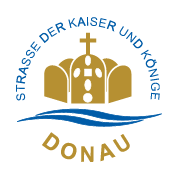All a question of faith
All a question of faith
The treasury of the Benedictine Abbey of Melk holds a very special treasure that is presented to the public only every holy time. We are talking about the so-called Melk Cross, a gilded reliquary from the middle of the 14th century, set with precious stones, whose magnificent decoration is only surpassed by its contents: A splinter from the True Cross of Christ.
No wonder, then, that this jealously guarded treasure aroused many a desire in the past. Around the middle of the 12th century, a clergyman named Ruprecht is said to have stolen the cross splinter - at that time still set in another reliquary - and handed it over to the Schottenstift in Vienna. The people of Melk demanded the cross back and a court of arbitration ruled in their favor. Only the Viennese citizens, so the legend goes, would have resisted letting such a treasure go again. So a divine judgment had to be made: the cross was placed in a small boat and put into the Danube. How great must have been the astonishment of the Viennese when the boat floated up the Danube to Nussdorf without any intervention. In 1169 or 1170 it found its way back to Melk.
Yet another time God Himself had to use the Danube as an instrument to avert a theft: in 1362 Otto Grimsinger from Emmersdorf opposite Melk could not resist the temptation and stole the cross from the sacristy. Alone, the Danube refused to carry his escape vehicle downstream. He was seized on the other side of the Danube and finally executed.
The Danube as a vehicle of divine counsel has a long tradition. The spiritual significance of Europe's most important river is reflected in the fish-faced stone figurines of the Neolithic Vinča culture as well as in the dozens of Bronze Age swords that ended up in the river as offerings. Long before the Celtic-Roman Danuvius, gods and goddesses apparently inhabited the Danube, whose names have long since been carried away by the waves. When then the jealous single god of the Christians and also that of the Muslims settled down in the Danube area, there was no more place for river gods. But as the legends of the Melk Cross show, the Danube waves sometimes gladly put themselves at the service of their creator.
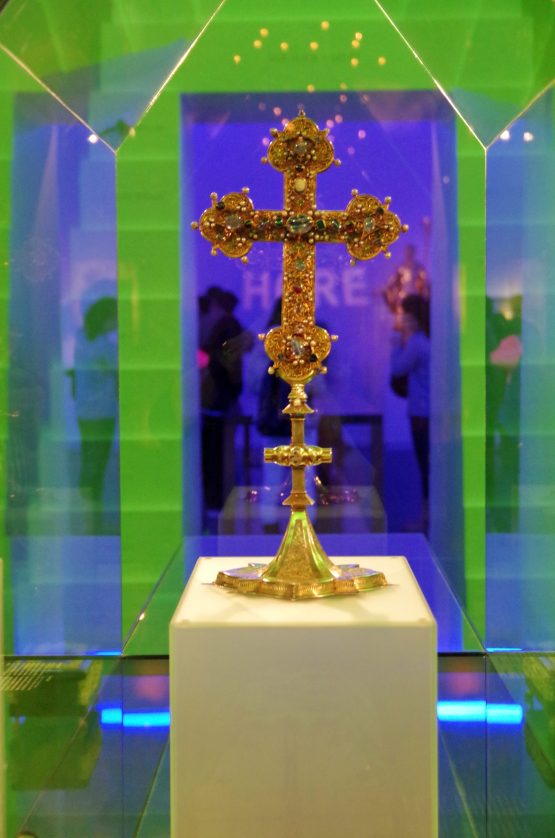
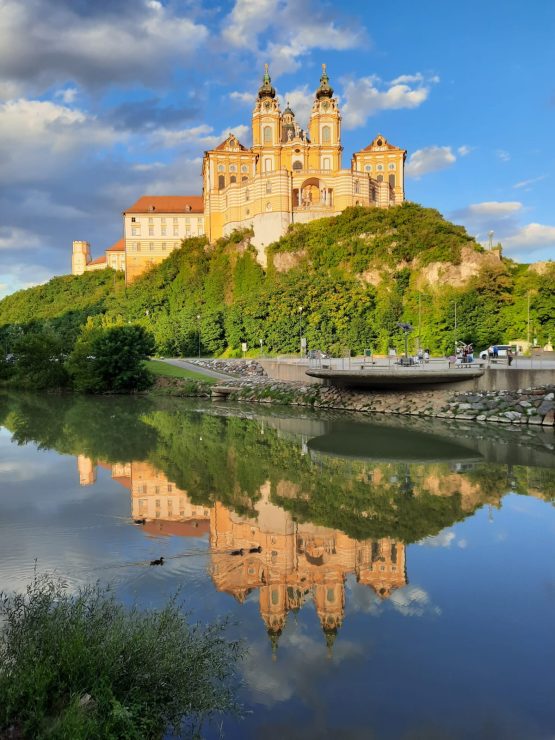
Speaking of Melk and the cross: Above the portal of the monastery, which leads into the magnificent prelate's courtyard, the inscription ABSIT GLORIARI NISI IN CRUCE is emblazoned in golden letters, which roughly means: "It is far to boast if not in the cross". Yes eh. The baroque builders, themselves PR professionals of their time, must have been aware that the spectacular monastery building could meet with criticism from one or the other visitor. Although Benedictines are not required to take a vow of poverty, modesty and personal lack of possessions are. The new baroque building of the complex, on the other hand, was not exactly characterized by modesty. Majestically enthroned on a rock above the Danube, the monastery was to bear witness to the glory of God - and en passant also to the strength of the Catholic Church, which had successfully survived the threat posed by both the Reformed Church and Islam. Understatement was not a thing of the Baroque era. One even interrupted the circumferential building wing in favor of an airy altane. From the Danube, this opened up the most unobstructed view possible of the new collegiate church designed by Jakob Prandtauer, the showpiece of the new building. After all, the exclusive location on the main traffic artery wanted to be used not only economically but also aesthetically. God has really thought of everything.
When the baroqueization of the monastery was initiated in Melk shortly after 1700, Habsburg Austria had a broad chest. In the preceding twenty years, they had finally succeeded not only in repelling the old hereditary enemy, the Ottoman Empire, but also in pushing it back down the Danube, piece by piece. The Christian forces finally had the upper hand in the centuries-long battle of religions. The Danube itself was the scene and symbol of this dispute. Both the expansion of the Ottoman Empire across the Balkans to just outside Vienna and the Christian counter-offensive took place along the middle Danube. However, the river marked a real religious and cultural border in this conflict only temporarily and for stretches.
There has been plenty of fighting along the Danube over the millennia. With the exception of the Habsburg-Ottoman disputes, religion was very rarely at issue. On the contrary, the Danube region, especially the middle and lower Danube, was characterized by a tremendous religious diversity up to the recent past, which has never existed in any other region of Europe. Even today, after all the zealously pursued religious and ethnic cleansing of the 19th and 20th centuries, at least seven large religious communities line up between the Black Forest and the Danube Delta, not counting various minorities. But even this is only a faint reflection of the mosaic of spiritual life and religious traditions that coexisted here for centuries. And competed with each other, of course. One of the most bizarre testimonies to the exchange of blows between the world's religions is surely the Church of the Blessed Virgin of Pécs: a medieval church was replaced by the Ottomans with a mosque, which in turn was converted into a church by the ultimately victorious Christians.
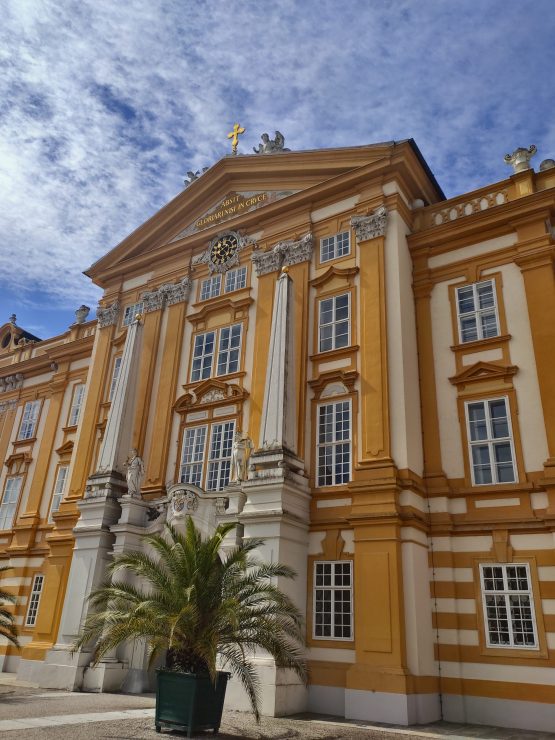
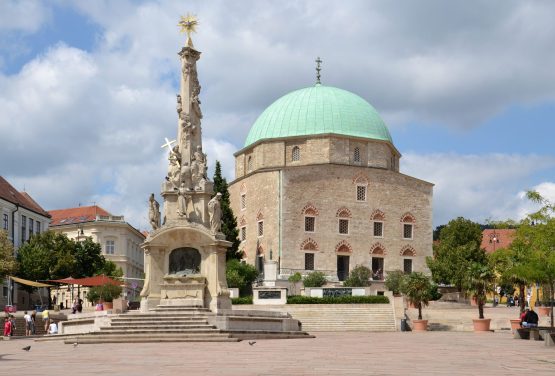
Let us return once again to the picturesque Benedictine Abbey of Melk and to another showpiece of its treasury: the monks call a monstrance their own, in which the lower jaw of St. Koloman is incorporated. Koloman himself is a tragic figure, an Irish pilgrim, so they say, in some traditions even a prince, who on his way to the Holy Land along the Danube near Stockerau was mistaken for a spy and summarily lynched. Since miracles subsequently occurred, the people of Stockerau belatedly but nevertheless realized that they had no ordinary man on their conscience. Koloman was soon venerated as a saint and his body was transferred to Melk Castle in 1014 at the behest of the Babenberg sovereigns. Koloman was not the only pilgrim. Especially since the Christianization of the Hungarians in the year 1000, the Danube was the main connection for all those who traveled east by land or by river, whether as peaceful pilgrims or as crusaders. The motivation of the pilgrims will have been very different, from the sincere hope to be inspired by the visit of holy places up to the followerism and calculation to expiate sins quasi in walking. However, the new boom in pilgrimage seems to confirm that a movement to a certain destination associated with hardship at least does something to our psyche, even if most wanderers today are more concerned with finding themselves than with finding God.
What do we learn from this colorful tour d'horizion? First and foremost, that the search for spirituality keeps people busy. For as long as we humans have existed, we have wanted to know what holds the world together, where we come from, where we are going and why we are actually here. We are and will remain seekers, even if religion and spirituality are virtually excluded from the lives of most people. This search takes the strangest forms, from deep inner piety to ostentatious display of one's faith, from desperate defense of one's own views to ruthless suppression of those of other faiths, from belief in miracles to political exploitation of them, from diligent pilgrimage to collecting bizarre relics. If all these facets can be found on a single rocky spur in Melk, how much more fruitful must a journey along the Danube to the delta prove to be? A modest answer to this question is offered by my TransDanube Travel Story "Danube for the Soul" , which takes the ideas outlined here a step further and turns the middle and lower Danube region into a laboratory. A laboratory in which the most diverse approaches to the supernatural can be observed, but also in which one's own attitude to faith and spirituality can be sampled. And so perhaps a journey along the most European of all rivers can be far more inspiring than mere sightseeing, provided one is receptive to all those traces that other seekers have left behind before us. But to all those who do not feel themselves to be seekers at all, the famous words of Michel de Montaigne should be taken to heart: If someone asks me why I travel, I answer: I know what I am fleeing from, but not what I am looking for.
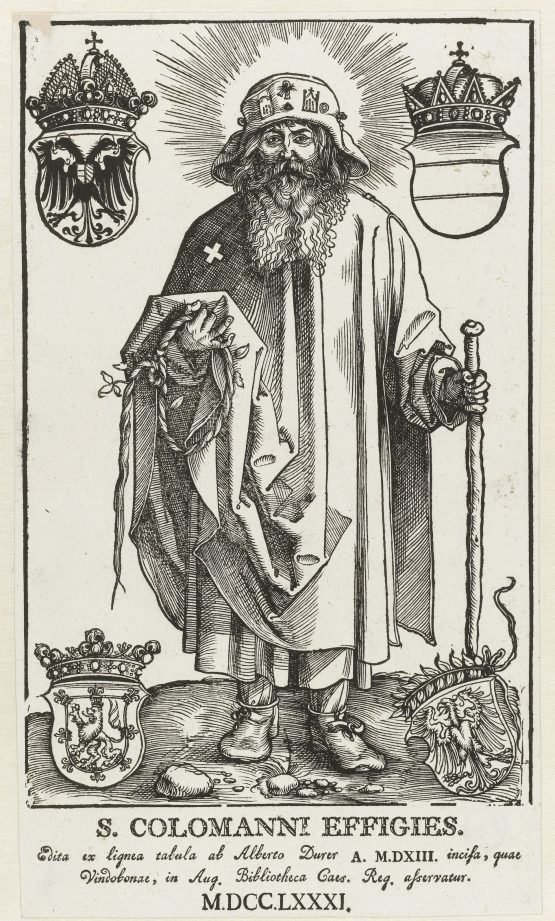
Dominik Heher lives as a freelance exhibition curator and author in Ybbs an der Donau in Lower Austria. Apart from the daily eye contact with the great river from the window of his home office, he has been closely connected to the Danube especially since the exhibition project "Danube. People, Treasures & Cultures" (Schallaburg 2020).


All six stories published as part of the INTERREG project "Transdanube Travel Stories" have now been published on our blog. If you are interested in the project, you can find all the stories on the official website, travel programs and videos about the routes can be found on the Danube Pearls website. All partners and links can be found here.
The Transdanube Travel Stories are also published as a PDF book in English and German. They tell about the themes that characterize the Danube and about the history it tells: Religions, nature, art, culture and architecture, about European politics and trade, and the Romans.
